SKU Feeds is a British based eCommerce service that allows you to submit your shopping products to a range of shopping channels, comparison websites, and coupon websites.
Your products will then be listed on multiple shopping websites. Rather than displaying an “Add to Cart” button, these websites tend to show a “Buy it Now” button. When a customer clicks to buy a product, they are taken to your website so that they can purchase the item.
You can see how this works in practice on the website Buy It Own It.
What SKU Feeds is supposed to do is provide many additional traffic streams to your online store and its products. Unfortunately, it does not.
At best this is a lazy half-finished eCommerce service that is not out even out of the beta phase. At worst, this is a service that is purposely lying to people to con them into thinking the advertising budget they are blowing on SKU Feeds is going to increase their sales.
How to Use SKU Feeds
SKU Feeds was developed by a British company called 5MS Business Solutions that proudly state that they are “Magento Experts”. They contacted me one week ago to tell me about their service.
The person who contacted me was called Tom Horton. He comes across as a really nice guy through our email correspondence and happily set up a test account for me to test the service.
After logging in to the SKU Feeds account, I soon got the impression that SKU Feeds is a work in progress (to put it politely).
There is not really much in the account area. The main pages you need to check are the product dashboard and the CSV and XML template page. In the CSV and XML template page I downloaded the provided sample files, but neither of these worked so I had to get another sample file sent to me.
When one or two things like this happen you put this down to human error, but when so many things are consistently wrong or missing, you start to wonder whether the developers have even tested their service.
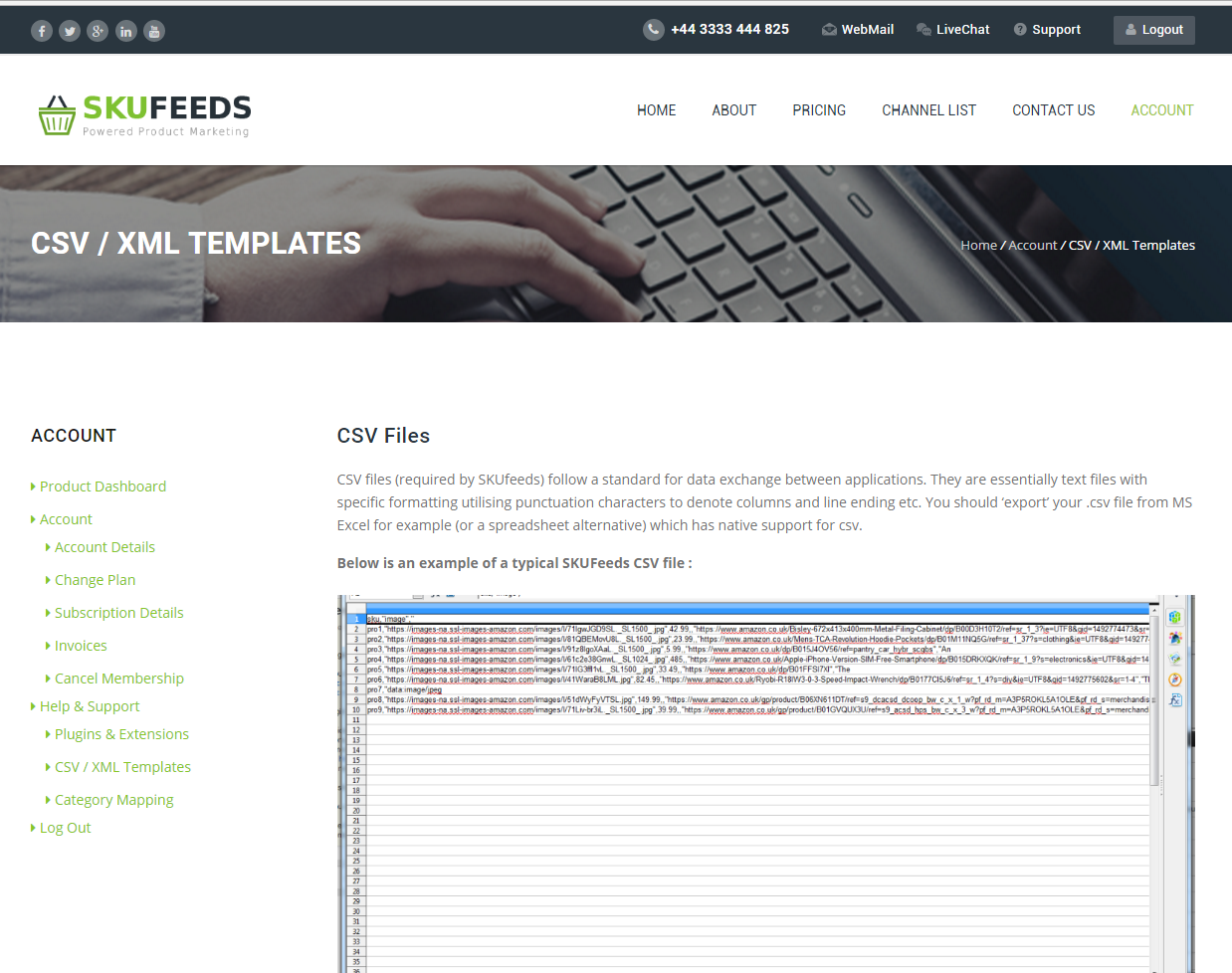
Their plugins and extensions page notes Lists Magento, Magento 2, Shopify, PrestaShop, and WooCommerce. The only one that is actually supported just now is Magento.
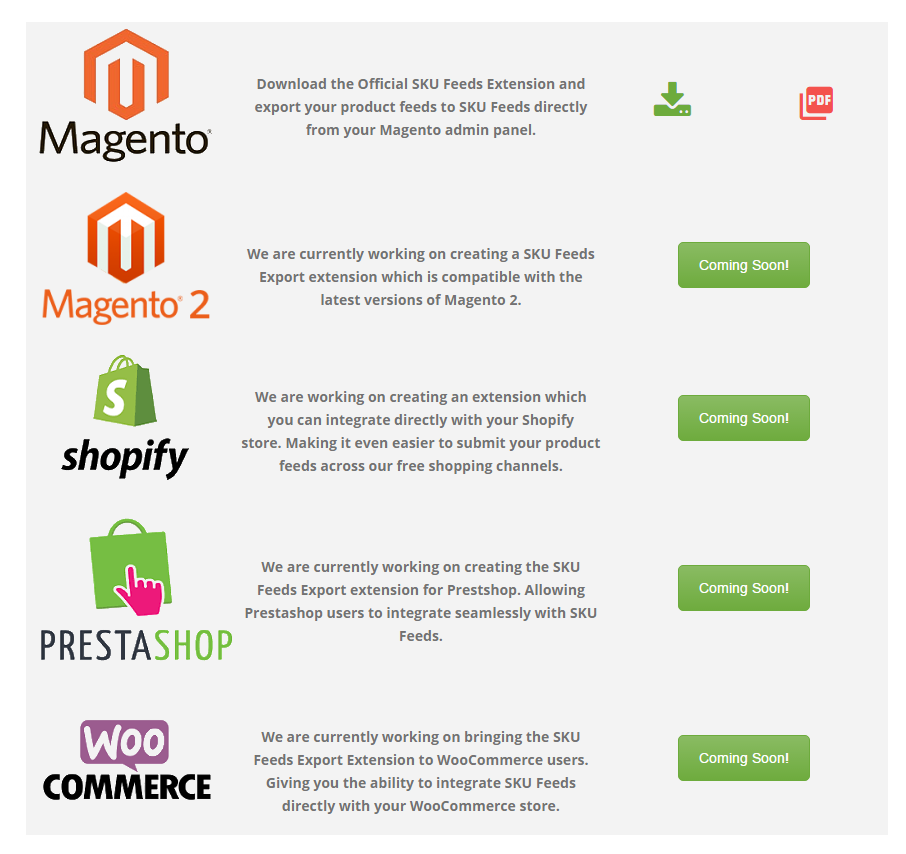
Although there is only one plugin available at the moment, you can upload your product feeds in either CSV or XML format. An auto upload option is also displayed in this settings area, but it was not available in my plan.
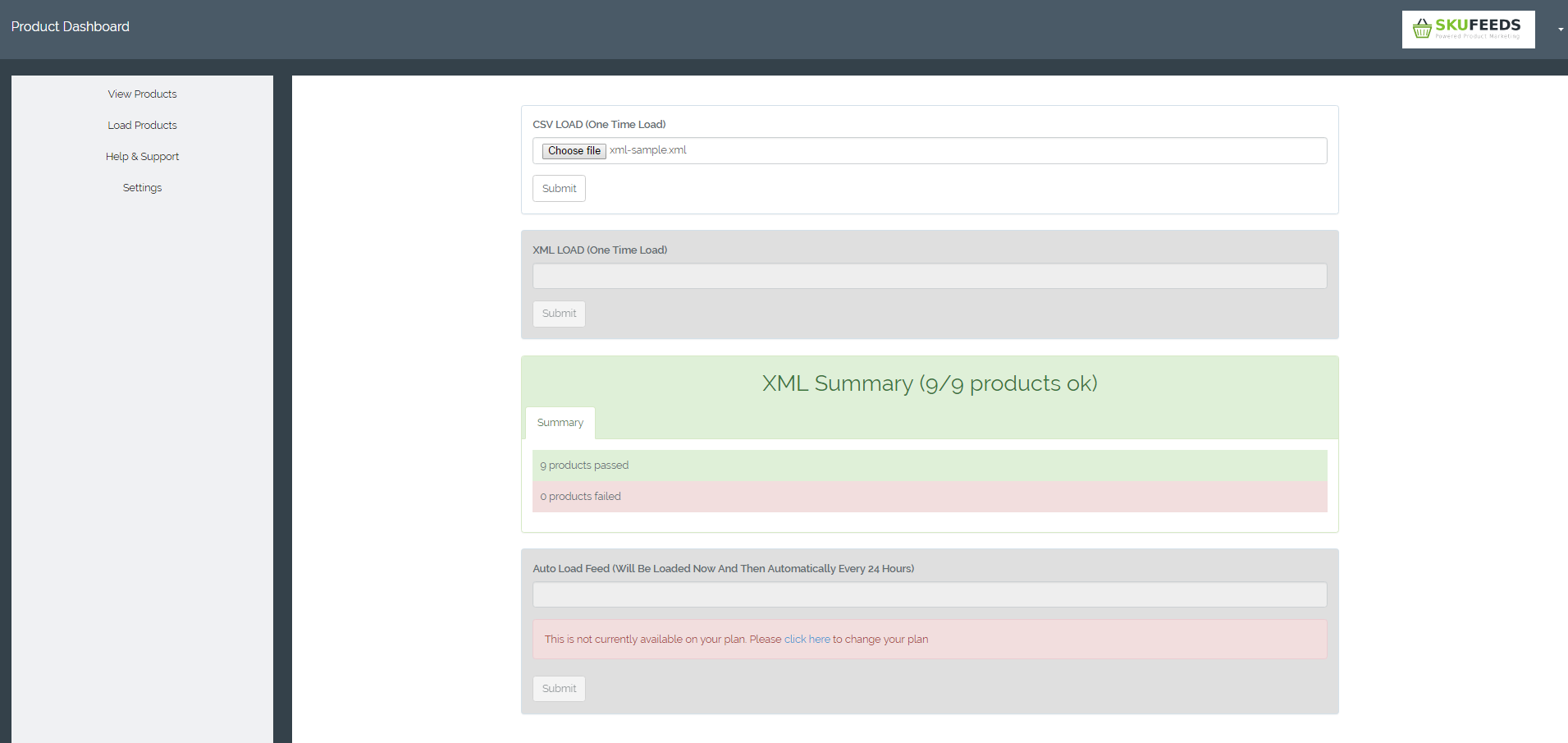
Once the products have been uploaded, you will see them displayed in the “View Products” page.
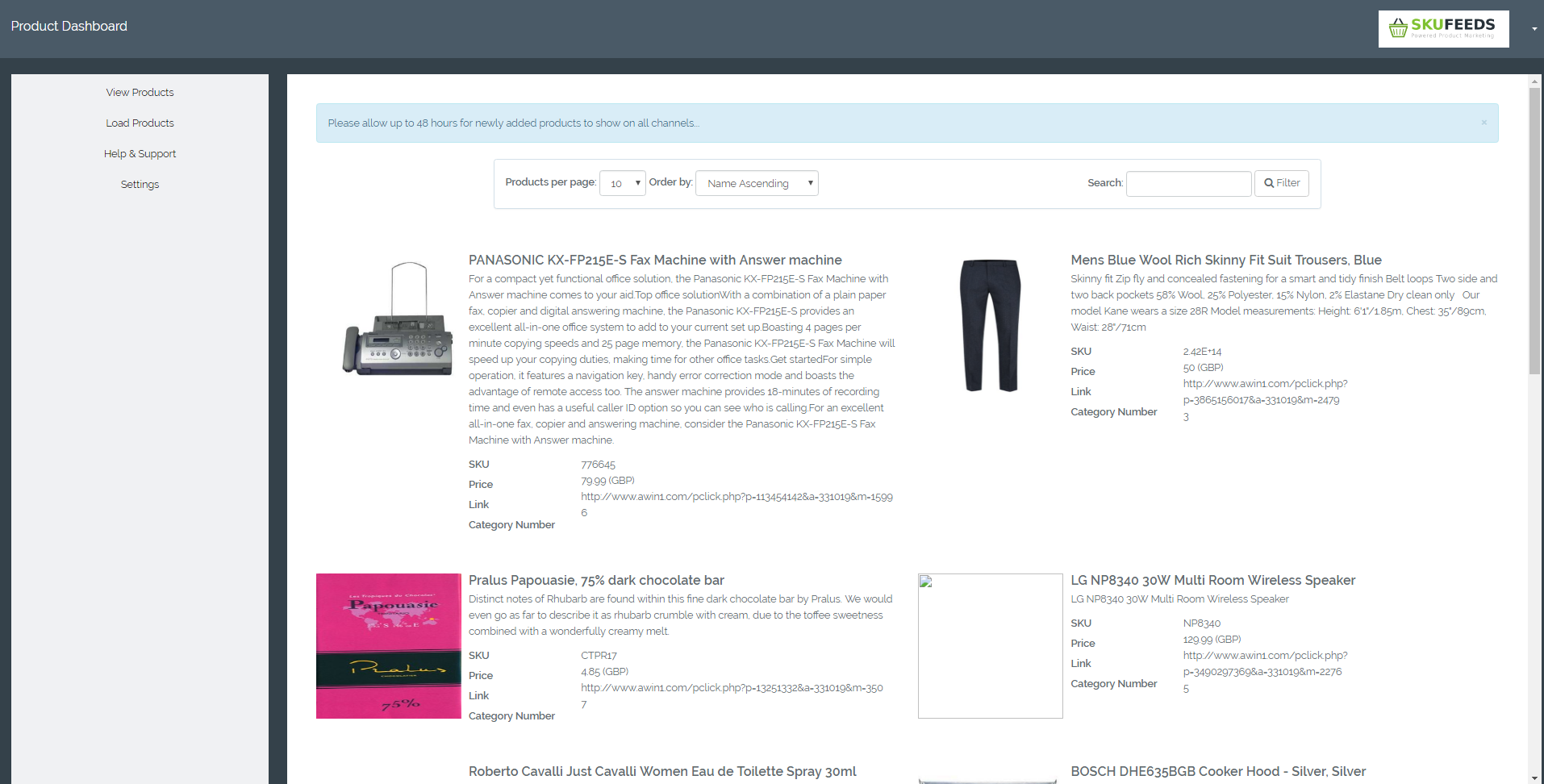
I queried with SKU Feeds how users are able to check which products have been synced with shopping channels. Unfortunately, there is no way to do it. As it stands, you need to upload your products and then check all of the shopping channels 48 hours later to see if everything processed OK.
It’s not a practical way to do things, though when I asked about this they did advise me that they are planning on adding a notifications system in the future.
In the settings area you can change the currency from Pound Sterling to US dollar, Euro, Japanese Yen, or Swiss Franc. You can also set a voucher code, voucher discount %, and voucher description.
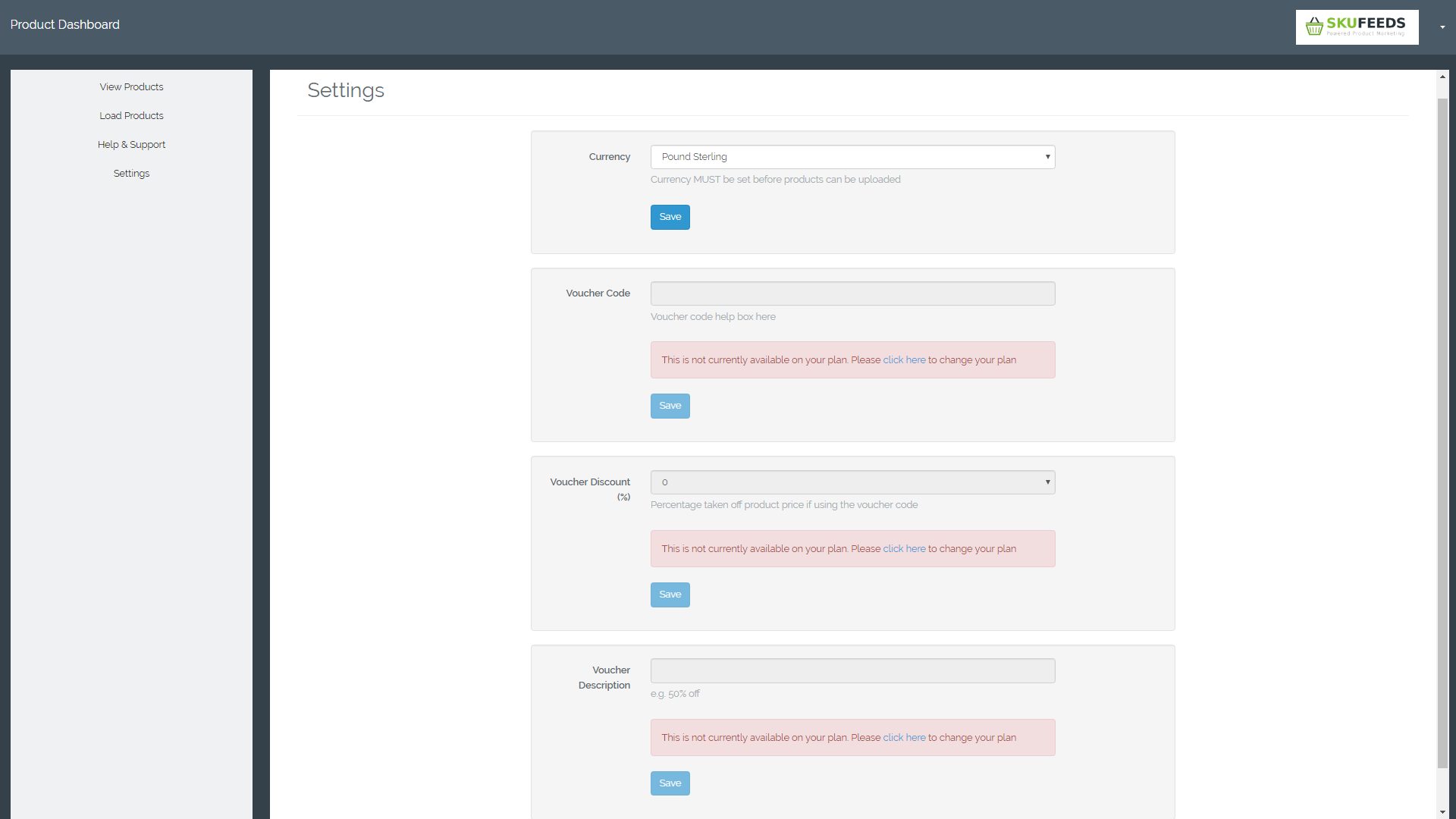
Guess what happens when you click on “Help & Support”?
Yes, you guessed right. You are taken to a 404 error page.
At this point I realised that no one who developed SKU Feeds has actually taken five minutes to use their own service.
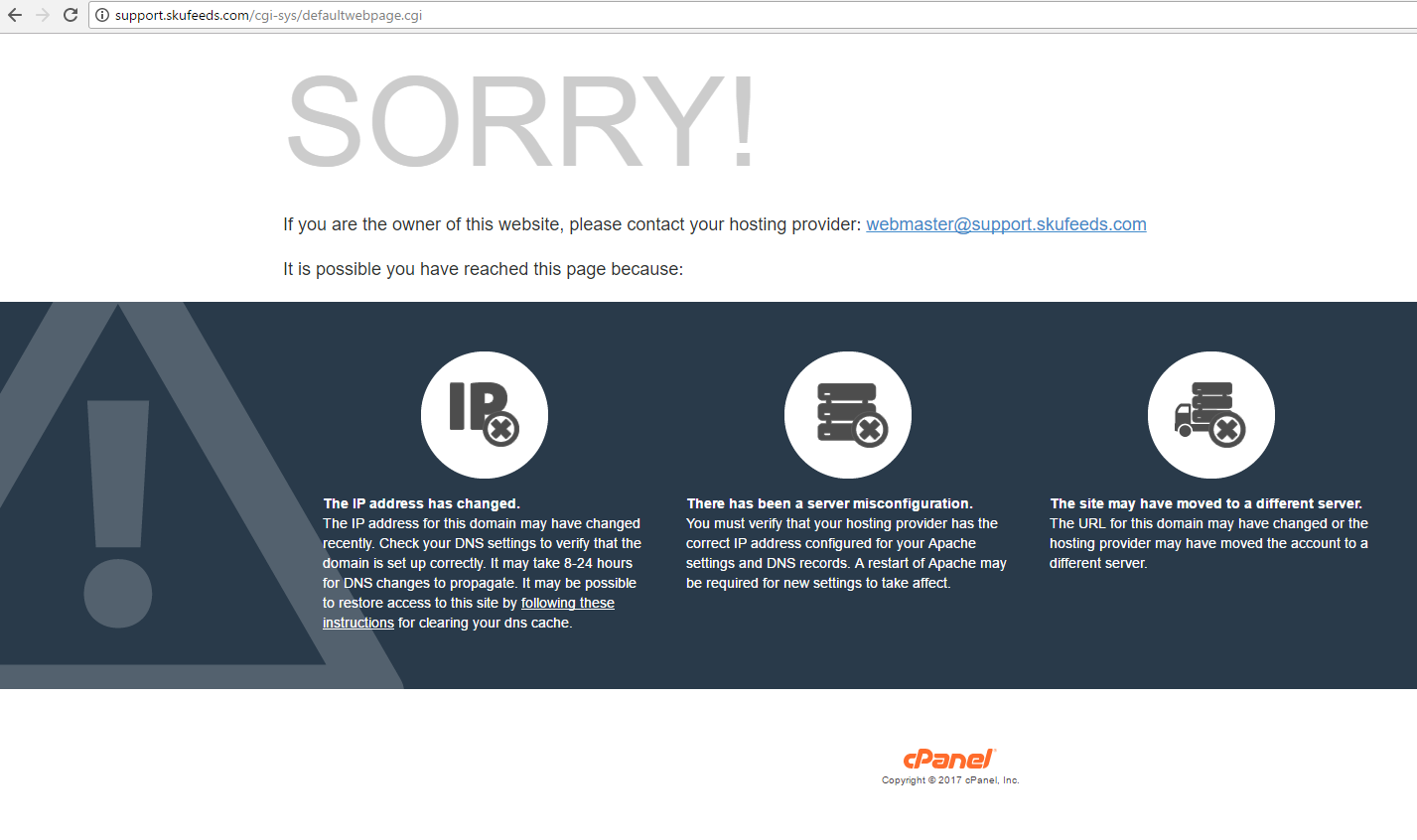
All in all, the product dashboard is extremely basic and there is no documentation that helps guides customers through the process.
The Big Problem with SKU Feeds
SKU Feeds currently supports ten shopping channels.
Five channels are provided in the free plan that is available. All ten channels are available to those who purchase a premium plan.
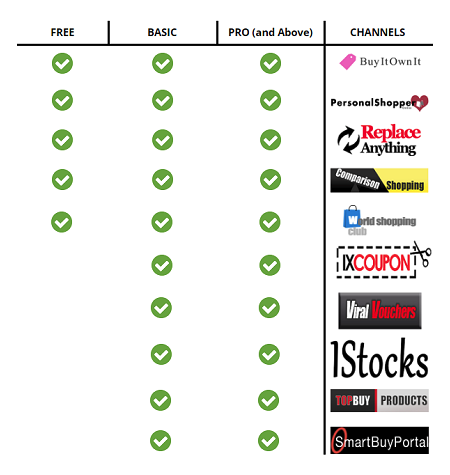
Below is the full list of shopping channels that are supported by SKU Feeds:
- Buy It Own It
- PersonalShopper Online
- Replace Anything
- Comparison Shopping
- World Shopping Club
- IXCoupon
- Viral Vouchers
- 1Stocks
- TopBuy Products
- Smart Buy Portal
I do not run an eCommerce website, but the first thing that sprung to mind about the ten shopping channels is that they are not established websites as I had never heard of them. They all appeared to be affiliate comparison websites that were created in minutes rather than hours or weeks.
There is nothing inherently wrong with that as affiliate websites can generate a huge amount of traffic if they are optimised for search engines.
Unfortunately, it did not take long for me to realise that all of the shopping channels that SKU Feeds works with are a collection of domains that have been picked up and used to build duplicate comparison websites.
Nearly all of the domains are registered on GoDaddy by someone called Jake Mason. In other words, SKU Feeds have not partnered up with other shopping companies. They have simply created their own.
Performing a quick search on the Internet Archive Wayback Machine with the above websites quickly explains the big problem with SKU Feeds. Many of the websites are so new that there is no website archive of them online. Others have only been online for weeks.
Just last week (Yes, last week!), the shopping website Replace Anything was a blog that had not been updated since 2008. Now they are telling customers that this is a website that will help you promote your products.

Put simply, all of the shopping channels that are supported by SKU Feeds are, well, they’re shit. They have been thrown online over the last few weeks in order to con people into thinking that they are getting their products distributed to legitimate shopping websites.
A quick look on an SEO tool such as Moz highlights that these domains have no domain authority and next to no backlinks either.
No traffic. No SEO Ranking. No point.
The whole thing is a scam.
The selling point of SKU Feeds is that you will generate traffic to your products from external shopping channels, but that is not going to happen. All the developers have done is created comparison turnkey websites and then uploaded them.
I explained to Tom how misleading their service is and he noted that they have customers who are happy with the exposure. This suggests to me that they are targeting shop owners who do not have much experience working online and persuading them they are getting a great deal.
Without analysing what is actually going on, SKU Feeds sounds like a great service.
In reality, you would get a better return by buying magic beans.
The Cost of SKU Feeds
You can sign up to SKU Feeds free of charge, though you are limited to 10 products. I am not even sure I can recommend signing up to the free plan as you would be wasting ten minutes of your life.
At first glance I did not think the pricing of SKU Feeds was out of place. After testing the service and seeing what it actually offers, the cost of SKU Feeds is insane.
Seriously, they honestly think that submitting products to websites that are weeks old is worth hundreds of pounds per month?
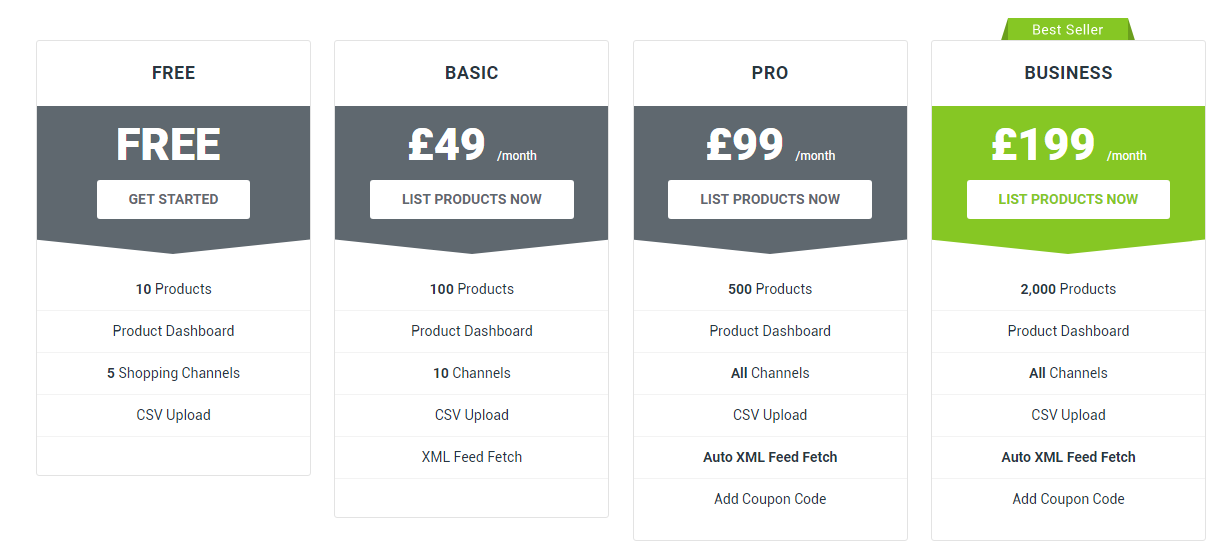
Yes, you are reading the prices right.
SKU Feeds are charging customers on a monthly basis. That means that there are companies out there paying thousands of pounds every year to get their products listed on turnkey comparison websites with no traffic. It’s quite sickening when you think about it.
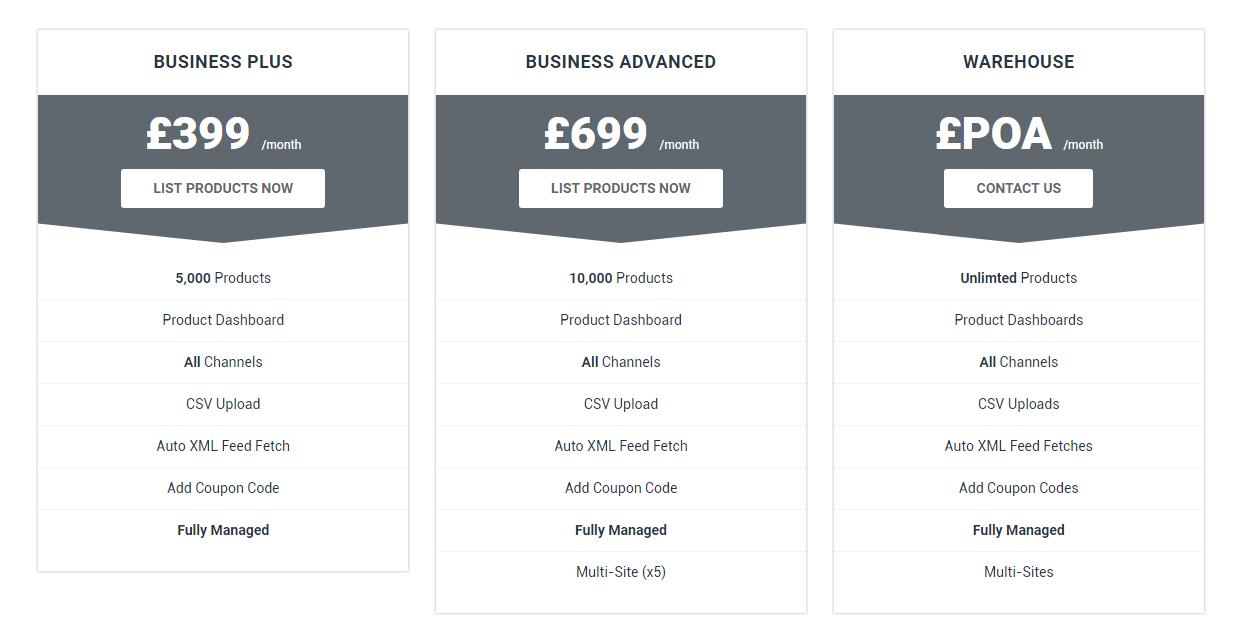
SKU Feeds has a page on their website advising that others can join their channel list.
Therefore, in theory, the service could add legitimate shopping channels to their channel list in the future. Unfortunately, no established shopping channels are currently partnered with SKU Feeds
As it stands, SKU Feeds are providing nothing to customers and charging them the world for the privilege.
Final Thoughts
SKU Feeds is a stark reminder of the importance of doing research on the products and services you select online.
At first glance I thought SKU Feeds looked like a great service that did something that many online shop owners are seeking. It was only when I began working on this review and investing the shopping channels that I realise how poor the service really is.
If I sound pissed off in this article, it is because I am.
I have a zero tolerance for bullshit and no respect for companies that try and rip people off.
Avoid SKU Feeds.
Kevin
P.S. I still used an affiliate tracking link in this article in case anyone is crazy enough to want to use SKU Feeds :)

